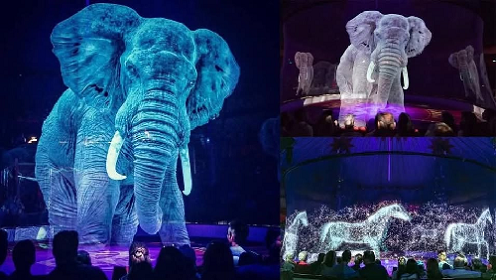The classic spectacle of the circus has entered a dazzling new era in Germany, where the renowned Circus Roncalli has completely eliminated live animal performances, replacing them instead with stunning, life-sized 3D holograms. This technological leap allows the show to maintain the traditional grandeur of a big-top animal act while ensuring a truly cruelty-free experience.
Circus Roncalli, founded in 1976, began phasing out its animal acts in the 1990s, and since 2018, has committed fully to the holographic format.
| Technology: The visual effects are achieved using eleven high-end laser projectors positioned around the arena. |
| 360-Degree Viewing: The system beams the animations onto an almost invisible mesh screen that circles the ring, allowing the entire audience to see the three-dimensional illusions from every angle. |
| Virtual Performers: The result is a magical display where giant, shimmering elephants, prancing horses, and even massive goldfish appear to move and perform tricks in the center ring. |
The innovation was pioneered by Circus Roncalli founder Bernhard Paul, who invested heavily in the technology to preserve the historical ambiance of the circus while addressing modern concerns about animal welfare. This move has garnered widespread praise from animal rights groups and has positioned the German circus as a global model for ethical entertainment.
The holographic animals provide all the awe and wonder of a traditional circus act without the ethical compromise of training and confining wild animals. Experts believe this trend could be the future for circuses worldwide, allowing the industry to evolve responsibly. The show seamlessly blends the virtual animal performances with its human acts, which feature a spectacular array of clowns, acrobats, and daredevil stunts.







